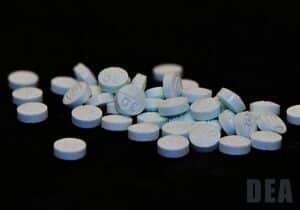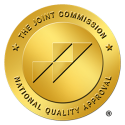Opioid withdrawal is a tough journey that affects both body and mind. When someone decides to stop using opioids after a long period, they might face various symptoms ranging from physical discomfort to emotional struggles. This happens as the body learns to function again without the drug. Although it’s a key step in recovery, managing these symptoms can be really tough without expert help. At Iris Wellness Group we offer comprehensive care for those facing opioid withdrawal. We create a safe and nurturing space to support you or your loved one through this important phase. Get in touch with us to start your recovery journey at our opioid addiction treatmentin Chattanooga, TN. Call our Opioid Rehab at 423-441-4650.
What are Opioids?
Opioids include a range of drugs, from illegal ones like heroin to legal prescription painkillers, such as oxycodone. These medications are often prescribed for severe or chronic pain. But here’s the thing – even when taken as prescribed, long-term use can lead to dependency. This dependency shows up as withdrawal symptoms when you reduce or stop taking the drug.
The chance of developing an opioid use disorder jumps up when opioids are misused. Misuse can look like taking someone else’s prescription or taking higher doses than what’s prescribed. Opioid use disorder is a medically recognized issue where ongoing opioid use starts to harm different areas of a person’s life, despite the negative effects.
It’s crucial to remember that opioid use disorder isn’t just about being physically dependent. It also involves complex behavioral and mental aspects. This condition can cause a slew of problems, from health issues and strained relationships to trouble managing work or home duties. Being aware of the risks tied to both prescribed and illicit opioid use is key for preventing and addressing this issue early on.
How Do Opioids Affect the Brain?
Opioids significantly influence the brain, creating feelings like drowsiness, relaxation, and a slower breathing rate. Many people especially notice a sense of euphoria, an intense wave of pleasure, which is part of the allure of these drugs.
Opioids work their magic by latching onto specific receptors in the brain, disrupting how pain signals are sent and received. They also drastically affect dopamine levels. Dopamine is the neurotransmitter that’s all about the brain’s reward system and reinforcing behaviors.
When opioids cause a dopamine surge, it’s akin to the natural dopamine release from activities we enjoy, like working out, pursuing hobbies, or hanging out with loved ones. But, when opioids trigger this release, the brain gets a signal that encourages repeating drug use, setting the stage for addiction. The brain starts to connect the drug with a pleasurable reward, increasing the urge to keep using it.
What is Opioid Withdrawal?
Opioid withdrawal kicks in when someone who’s dependent on these drugs stops taking them. This dependence forms as the body gets used to functioning with the presence of opioids. Withdrawal symptoms can vary, affecting both the body and the mind.
Here’s how it works: Opioids bind to receptors in the brain, spinal cord, and other parts of the body, blocking pain signals and boosting dopamine levels. This effect makes them effective pain relievers, like oxycodone or morphine, prescribed post-surgery or for injury-related pain. There are also illegal opioids, such as heroin, which are used for their euphoric effects. While prescription opioids are generally safe for short-term use under medical supervision, long-term use can lead to dependence or even an overdose.
Thinking about stopping long-term opioid use? It’s essential to talk with a healthcare professional. They often suggest slowly reducing the dosage, a process called tapering, to ease withdrawal symptoms. This tapering should be done under medical supervision to ensure it’s safe and effective. The aim is to gently wean the body off opioids, lessening withdrawal symptom severity and aiding a smoother transition to a life without opioids.
For further support and information, especially in Chattanooga, TN, Iris Wellness Group is here to help. Our team is equipped to guide individuals through this complex process. Call us at 423-441-4650 to start your journey toward recovery.
What Causes Opioid Withdrawal?
Opioid withdrawal is a complicated process that happens when your body has to adjust to not having opioids after you’ve been using them for a while. When you use opioid medications for a long time, your body starts to get used to them. This is called tolerance, and it means you might need more of the drug to get the same effect, which can accidentally increase the risk of opioid overdose.
Using opioids for a long time causes big changes in the brain’s nerve receptors. These receptors get so used to the drug being around that they start depending on it to work normally. When you suddenly stop taking the drug, your body finds it hard to adjust to its absence, and this leads to withdrawal symptoms.
Physical dependence on opioids shows up as withdrawal symptoms when you stop taking the medicine. These symptoms are just your body reacting to not having the drug it’s gotten used to. It’s pretty common for people to become dependent on opioids to avoid pain or the discomfort of withdrawal. Often, this dependence sneaks up on people, and they might not even realize it’s happening. They might think their withdrawal symptoms are something like the flu, not realizing these are actually signs of their body needing the drug.
It’s really important to understand what opioid withdrawal is, especially if you’ve been using these medications for pain. Knowing the signs of dependence and withdrawal can help you get the right medical help and support to manage and eventually beat opioid dependence safely.
What are the Symptoms of Opioid Withdrawal?
When you suddenly stop or greatly cut back on your opioid medication, you might experience uncomfortable withdrawal symptoms. These symptoms can also pop up if you’re taking another medication that affects how well your opioid works.
It’s pretty normal to feel not-so-great when going through opioid withdrawal, which is why it’s important to have a solid plan for stopping your medication. The best way to do this is to slowly reduce your dosage under the watchful eye of your doctor.
The symptoms of opioid withdrawal are pretty similar no matter which opioid you’re using, and they can include:
- Temperature Changes: You could have hot flashes or chills, sweat a lot, and get ‘goosebumps’.
- Mood Swings: You might feel more anxious or easily irritated.
- Craving Opioids: There’s often a strong urge to use opioids again.
- Stomach Problems: You could experience nausea, vomiting, diarrhea, and lose your appetite.
- Physical Discomfort: Expect things like shaking (tremors), watery eyes, a runny nose, sneezing, yawning, and trouble sleeping.
You might also feel different kinds of pain during withdrawal, like aches in your joints, bones, or muscles, stomach pain, or headaches.
Remember, while these symptoms can be tough, they’re definitely something you can manage with the right medical help and support. Your doctor can offer ways to ease these symptoms and make withdrawing from opioids a more bearable process.
How Can I Manage Opioid Withdrawal Symptoms?
Effectively handling opioid withdrawal symptoms involves both medical advice and personal care tactics. It’s vital to remember that these symptoms, while uncomfortable, are temporary and usually not harmful. Here’s how you can manage them:
Step-By-Step Reduction under Medical Supervision
The best way to minimize tough withdrawal symptoms is by slowly reducing your opioid use with your doctor’s help. This methodical decrease in dosage allows your body to adapt more smoothly.
Self-Care Approaches
- Stay Hydrated: Drink lots of water to counteract dehydration, especially if you’re experiencing symptoms like sweating, nausea, or vomiting.
- Mind-Body Practices: Techniques such as yoga, relaxation exercises, and mindfulness can be great for coping with pain and discomfort.
- Lean on Others: Let your family and friends know what you’re going through so they can offer their support.
Consult Your Doctor
Talk with your doctor about the most effective ways to deal with withdrawal symptoms. They can offer tailored advice and treatment options that suit your specific situation.
Confronting Withdrawal Fears
Don’t let the fear of withdrawal stop you from reducing or quitting opioids. A gradual reduction in dosage, as recommended by your doctor, can make the process more bearable.
Medications to Ease Withdrawal
There are several medications that can help lessen withdrawal symptoms, such as:
- Clonidine: Good for symptoms like sweating, irritability, fast heart rate, and high blood pressure.
- Diazepam: Can help reduce irritability and anxiety.
- Metoclopramide: Effective for nausea and vomiting.
- Pain Relief: Over-the-counter meds like paracetamol or ibuprofen can alleviate headaches and muscle or joint pain.
- Loperamide: Useful for controlling diarrhea.
Long-Term Medication-Assisted Treatment
In some cases, long-term treatments might include medications like methadone and buprenorphine. These are less harmful opioids that can help manage symptoms and assist in the gradual reduction of opioid use.
Remember, everyone’s experience with opioid withdrawal is different, so it’s important to work closely with your healthcare provider to figure out the best plan for you. With the appropriate strategy and support, it’s entirely possible to overcome opioid
Opioid Withdrawal Timeline
Opioid withdrawal is not a one-size-fits-all process. It varies based on the type of opioid you’ve been using, including well-known ones like heroin and various prescription opioids. These prescription drugs can be either short-acting or long-acting, and this affects how withdrawal plays out. Several factors come into play here: the specific opioid you’ve been taking, how severe and quickly the withdrawal symptoms hit, how long they last, how long you’ve been using opioids, the doses you’ve been taking, and how often you’ve used them.
With drugs like heroin and short-acting opioids (think morphine, oxycodone, hydrocodone, and immediate-release fentanyl), withdrawal symptoms usually start showing up 8-12 hours after your last dose. These symptoms often hit their peak between 1-3 days and can stick around for about a week. On the other hand, withdrawal from long-acting opioids like methadone, or the extended- or controlled-release forms of morphine, oxycodone, hydrocodone, and fentanyl, works a bit differently. The symptoms might not kick in until about 36 hours after the last dose and can hang around for two weeks or more.
It’s crucial to remember that everyone’s experience with opioid withdrawal can be quite different. The type and length of opioid use, along with individual body factors, play a big role in how severe and long-lasting the symptoms are. If you or someone you know is going through opioid withdrawal, getting professional medical advice is key to managing these symptoms safely and effectively.
How Long Does Opioid Withdrawal Last?
The timeframe for opioid withdrawal symptoms can really differ from person to person. Generally, these symptoms can last from just a few days to more than two weeks. For most people, the worst of the symptoms eases up after the first few days.
It’s also worth mentioning that if you’ve been given a medication like naloxone to reverse an opioid overdose, it can change how withdrawal plays out. With naloxone, withdrawal symptoms might kick in faster and feel more intense than what you’d typically expect. You might also experience things like changes in blood pressure or heart rate, which need to be watched and managed by medical professionals.
The length and intensity of withdrawal symptoms are shaped by several factors. These include the type of opioid you’ve been using, how long you’ve been using it, the doses, and your own body’s response. Sometimes, certain symptoms might stick around longer and will need ongoing care and support.
Given all these variables, it’s super important to go through opioid withdrawal with the help of a healthcare professional. They can offer personalized guidance and support, making sure your withdrawal experience is as safe and manageable as possible. Remember, while going through opioid withdrawal can be tough, the right medical care and support can make a big difference in smoothing out the process.
What Causes Opioid Withdrawal and Dependence?
Opioids, when used as prescribed by a doctor, can be really effective in managing pain, especially after surgery or in severe discomfort cases. However, if you use opioids for a long time, you might start developing tolerance. This means you’ll need bigger doses to get the same relief from pain. Over time, this can lead to using more and more opioids, and you might become physically dependent on them.
The Tolerance-Withdrawal Cycle
Physical dependence on opioids shows up as withdrawal symptoms when you either cut down or suddenly stop using the drug. This creates a tough cycle: you try to stop or reduce using opioids, only to be hit with uncomfortable withdrawal symptoms, and then you might end up using the drug again just to get rid of those symptoms.
Dangers of High-Dose Opioid Use
Taking high doses of opioids isn’t without risks. It can cause extreme sleepiness, nausea, a feeling of euphoria, and, most dangerously, it can slow down your breathing, which can be really dangerous or even deadly.
Commonly Used Opioids
There are several types of opioids, including:
- Codeine
- Fentanyl
- Heroin
- Hydrocodone (alone or with acetaminophen)
- Morphine
- Oxycodone (alone or with acetaminophen)
- Oxymorphone
Changes in the Brain
Continued opioid use can change how neurons in your brain work, especially without the drug. This can lead to addiction, where you feel a strong, uncontrollable urge to use the drug, despite knowing it’s causing harm and negative consequences.
The Experience of Opioid Withdrawal
When your body, now reliant on opioids, suddenly doesn’t get them, you go through withdrawal. This process can be tough, both physically and emotionally, as your body and brain try to get back to normal without the opioid.
It’s really important for anyone using opioids to understand how withdrawal and dependence work. This knowledge underlines the need to use these medications carefully and under medical supervision, especially if you’re thinking about stopping or reducing your use. Being aware of the signs of dependence and withdrawal is key to getting timely medical help and support
How is Opioid Withdrawal Diagnosed?
To diagnose opioid withdrawal, your primary care physician will start with a comprehensive physical examination and a detailed conversation about your symptoms. This talk is really important because it gives your doctor a clear picture of what you’re experiencing and the severity of your withdrawal.
Your doctor might also run some urine and blood tests. These are crucial for finding out if there are opioids in your system. The test results can shed light on your recent drug use and how intense your withdrawal might be.
A key part of the diagnosis is a thorough review of your drug use history and medical background. Being open and honest in this discussion is super important. When you’re upfront about your situation, it helps your doctor understand it better, which is essential for them to provide the best possible treatment and support.
They’ll probably ask about how often and how long you’ve been using opioids, what kind you’ve used, and if you’ve tried to quit or cut down before. All this info is used to craft a treatment plan that’s just right for you.
Remember, the main aim of this evaluation is to make sure you get the right care and support as you go through withdrawal and start your recovery. Getting an accurate diagnosis is the first step in a successful treatment journey, and your honesty and cooperation are super important in making it work.
Who is Most Likely to Experience Opioid Withdrawal Symptoms?
Not everyone is equally likely to experience opioid withdrawal symptoms. There are certain factors that can make you more prone to these symptoms. Let’s break down who might be at a higher risk:
- Those Taking High Doses: If you’re using opioids in large amounts, your risk of facing withdrawal symptoms goes up. Your body gets used to the presence of the drug, and any reduction in dosage can be more sharply felt.
- Long-Term Users: People who have been using opioids over a long period, typically more than six months, are more likely to encounter withdrawal symptoms. Extended use can change the way your body responds to the medication.
- Rapid Dosage Reduction: If you suddenly decrease the amount of opioids you’re taking, your body might react to this change. It’s usually safer to gradually reduce your dose to lessen withdrawal symptoms.
- Regular Use for a Month or More: Even using opioids daily for a month can lead to withdrawal symptoms. Regular usage conditions your body to expect the drug, creating a physical dependence.
It’s key to understand that you can become dependent on opioids even if you’re just following your doctor’s prescription. Dependence means your body has gotten used to the drug, so stopping abruptly can lead to withdrawal symptoms.
On the other hand, if you’ve been using opioids infrequently or only for a short time, you’re less likely to experience withdrawal symptoms. Remember, everyone’s situation is different, and it’s important to get advice from healthcare professionals who can offer guidance based on your unique circumstances.
Can You Die From Opioid Withdrawal?
Generally, opioid withdrawal is not considered to be life-threatening, although it can be extremely uncomfortable. However, there are certain situations where it can become more serious, especially if you have other health conditions or if there are complications from injecting drugs.
A big risk during opioid withdrawal is the increased chance of an overdose if someone starts using opioids again after a break. When you haven’t used opioids for a while, your body’s tolerance for the drug goes down. This means you can be more affected by the same amount of opioids than before.
Trying to detox on your own, without a doctor’s supervision, also has its risks. For example, severe dehydration and heart problems can happen due to untreated diarrhea and vomiting. While these symptoms themselves aren’t usually life-threatening, they can lead to more serious health issues if they’re not taken care of properly.
It’s really important to go through opioid withdrawal with medical help. Healthcare professionals can make sure you’re safe and can deal with any problems that might come up. They can also help you manage withdrawal symptoms more effectively and lower the risk of any serious complications.
Opioid Withdrawal Treatment
Recovering from opioid addiction usually involves both physical and mental health support. There are different treatments available to help ease withdrawal symptoms and lower the chance of falling back into opioid use.
Detox for Opioid Withdrawal
The detox stage is a key time when your body adjusts to not having the drug anymore. This usually happens under close medical watch and typically takes about 5–7 days. During detox, healthcare professionals keep an eye on:
- Blood pressure
- Body temperature
- Heart rate
- Breathing
Monitoring these vital signs is vital to make sure your body is handling the withdrawal safely.
Medication-Assisted Treatment for Opioid Withdrawal
In some situations, doctors might use medications like methadone to help with withdrawal. Methadone is an opioid, but it lasts longer in the body, which can help reduce withdrawal symptoms. The doctor will then carefully decrease the amount of methadone over a week or more. Some people might need to keep taking methadone for a while, slowly easing off of it.
Buprenorphine is another drug used in treating opioid withdrawal. It’s a partial opioid agonist, which means it works somewhat like other opioids but doesn’t fully turn on the opioid receptors. This can be helpful in stopping the use of the original opioid and in cutting down cravings.
However, it’s worth noting that the Food and Drug Administration (FDA) has pointed out that buprenorphine, especially when taken under the tongue, can cause tooth decay. This can happen even if you haven’t had dental problems before.
Getting through opioid withdrawal takes a well-rounded plan that includes medical supervision and the right medications. It’s really important to work closely with healthcare providers to make sure your withdrawal is safe and fits your specific health needs.
Opioid Withdrawal Treatment at Iris Wellness Group
In the serene suburbs of Chattanooga, TN, Iris Wellness Group is a haven for those fighting opioid addiction. Our opioid addiction treatment center offer a nurturing environment conducive to recovery.
Our compassionate opioid outpatient program offers top-tier medical outpatient opioid detox, ensuring a safe and effective detox process. Once free from addictive substances, you can seamlessly transition into one of our specialized outpatient treatment programs at Iris Wellness Group, designed to address substance use disorders:
- Outpatient Detox: Combines the convenience of living at home with the effectiveness of regular treatment sessions, ideal for integrating recovery with your everyday life.
- Outpatient Rehab: This program is really flexible, designed to work around your daily schedule.
- Partial Hospitalization Program (PHP): It’s structured but you don’t have to stay overnight. It’s like getting intensive treatment during the day while you live at home.
- Intensive Outpatient Program (IOP): This one offers deeper, more focused care but still lets you keep up with your everyday responsibilities.
- Dual Diagnosis Treatment Program: This is specially for people who are dealing with both addiction and mental health issues at the same time.
Our opioid treatment programs incorporate a variety of interventions:
- Medication-Assisted Treatment (MAT): This uses medicines to help reduce withdrawal symptoms and the urge to use opioids.
- Psychotherapy: This is all about tackling the mental and emotional factors that play a part in addiction by using CBT or DBT.
- Group Therapy: Here, you’ll get support and learn with others who are going through similar experiences.
- Individual Therapy: You’ll get one-on-one support that’s tailored just for you.
- Family Therapy: This helps fix and strengthen your relationships with family, which is super important.
- Holistic Therapies: These focus on improving your overall health – body, mind, and spirit.
- Aftercare: We’ll keep supporting you even after your treatment is over.
Begin your path to recovery with Iris Wellness Group. Our experienced team is here to guide and support you. For more information or to start opioid addiction treatment, reach out to our admissions team at 423-441-4650.












